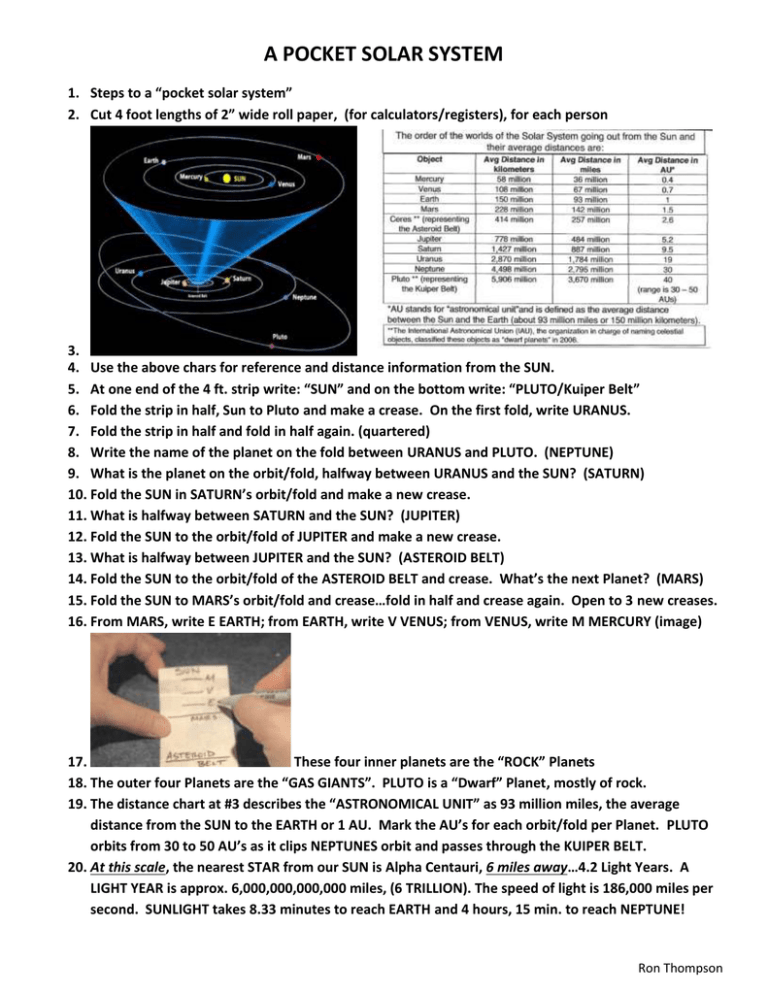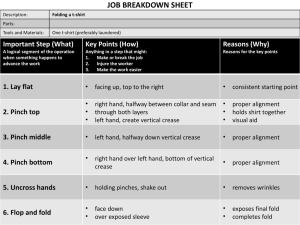Pocket Solar System Handout
advertisement

A POCKET SOLAR SYSTEM 1. Steps to a “pocket solar system” 2. Cut 4 foot lengths of 2” wide roll paper, (for calculators/registers), for each person 3. 4. Use the above chars for reference and distance information from the SUN. 5. At one end of the 4 ft. strip write: “SUN” and on the bottom write: “PLUTO/Kuiper Belt” 6. Fold the strip in half, Sun to Pluto and make a crease. On the first fold, write URANUS. 7. Fold the strip in half and fold in half again. (quartered) 8. Write the name of the planet on the fold between URANUS and PLUTO. (NEPTUNE) 9. What is the planet on the orbit/fold, halfway between URANUS and the SUN? (SATURN) 10. Fold the SUN in SATURN’s orbit/fold and make a new crease. 11. What is halfway between SATURN and the SUN? (JUPITER) 12. Fold the SUN to the orbit/fold of JUPITER and make a new crease. 13. What is halfway between JUPITER and the SUN? (ASTEROID BELT) 14. Fold the SUN to the orbit/fold of the ASTEROID BELT and crease. What’s the next Planet? (MARS) 15. Fold the SUN to MARS’s orbit/fold and crease…fold in half and crease again. Open to 3 new creases. 16. From MARS, write E EARTH; from EARTH, write V VENUS; from VENUS, write M MERCURY (image) 17. These four inner planets are the “ROCK” Planets 18. The outer four Planets are the “GAS GIANTS”. PLUTO is a “Dwarf” Planet, mostly of rock. 19. The distance chart at #3 describes the “ASTRONOMICAL UNIT” as 93 million miles, the average distance from the SUN to the EARTH or 1 AU. Mark the AU’s for each orbit/fold per Planet. PLUTO orbits from 30 to 50 AU’s as it clips NEPTUNES orbit and passes through the KUIPER BELT. 20. At this scale, the nearest STAR from our SUN is Alpha Centauri, 6 miles away…4.2 Light Years. A LIGHT YEAR is approx. 6,000,000,000,000 miles, (6 TRILLION). The speed of light is 186,000 miles per second. SUNLIGHT takes 8.33 minutes to reach EARTH and 4 hours, 15 min. to reach NEPTUNE! Ron Thompson



